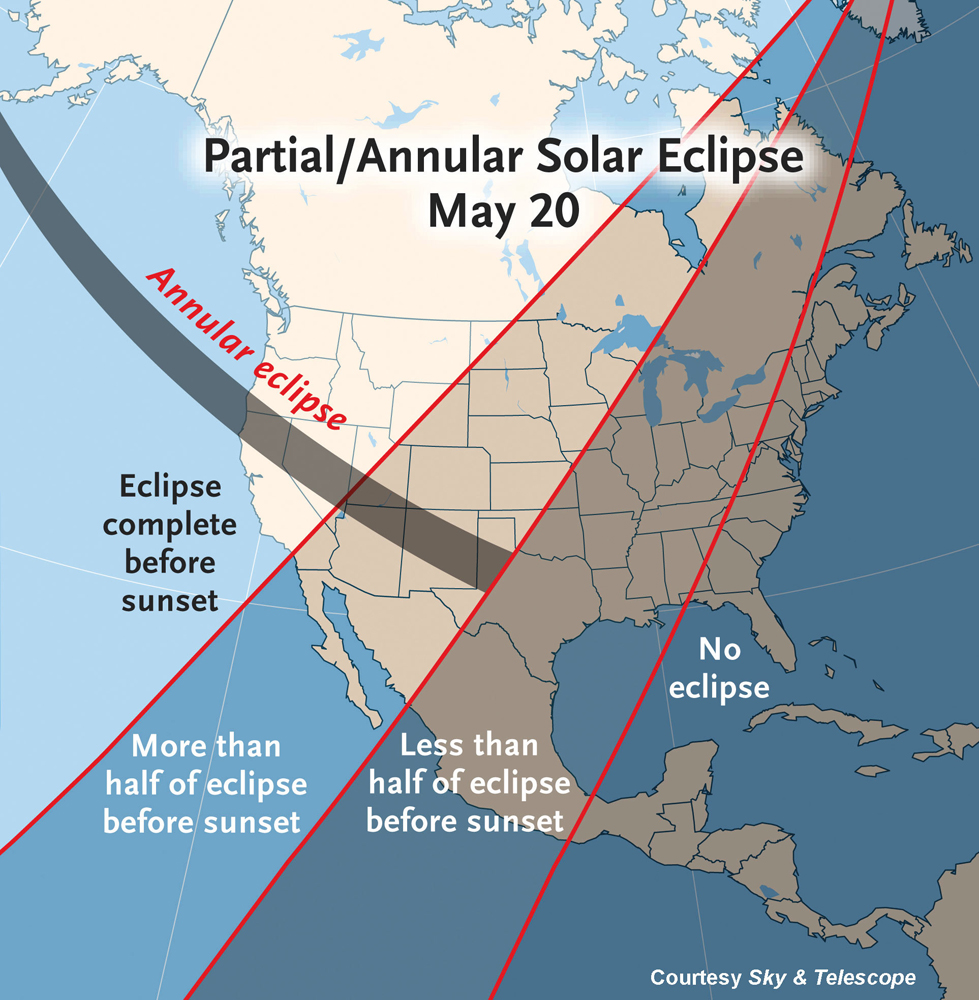NASA to Watch Solar Eclipse from Grand Canyon Sunday

A solar eclipse is set to impress skywatchers around the world this weekend, and a team of NASA scientists are hosting a fun viewing party at one of the most spectacular destinations in the United States: The Grand Canyon.
Officials from NASA's Lunar Science Institute (NLSI), at the Ames Research Center in Moffett Field, Calif., are conducting free public programs at the Grand Canyon Village Visitor Center on Sunday (May 20), including safe telescope viewing of the eclipse as it happens.
The solar eclipse will occur in the afternoon and early evening on Sunday, when the moon passes between Earth and the sun and casts a shadow on the planet. At its peak, the moon will block roughly 94 percent of the sun's light, which should make for a spectacular skywatching event, said Brian Day, director of communication and outreach at the NLSI.
Sunday's natural phenomenon is called an annular solar eclipse (from the Latin word "annulus," which means "little ring"), because the moon will not completely block the sun, but will leave a fiery ring around its circumference. The eclipse will occur in the late afternoon or early evening of May 20 throughout North America, and May 21 for observers in Asia.
"A solar eclipse is one of the best public outreach events you can ask for," Day told SPACE.com Friday (May 18), en route to the Grand Canyon. "This is a great opportunity for us to take advantage of this great show that nature is providing." [How to Safely Photograph the Sun (Photo Guide)]
Day and his colleagues will be giving three presentations throughout the day at the Grand Canyon Village Visitor Center to talk about the eclipse, as well as the exciting NASA missions currently in space to study the moon and the sun. Meteorites and lunar samples will also be on display, Day said.
"We'll also be setting up our telescopes at the Grand Canyon to enable people to safely view the solar eclipse, and we're going to be accompanied by a number of amateur astronomers that the National Park Service has invited for this event," he added.
Breaking space news, the latest updates on rocket launches, skywatching events and more!
The eclipse should be visible from much of Asia, the Pacific region and North America. Parts of the United States and Canada will see a partial solar eclipse, but not the full ring of fire effect. The East Coast, however, will miss the event because the sun will have set before the eclipse begins. This eclipse skywatching guide has more information about viewing locations and times.
"The eclipse is viewable over a large area of the continental United States, but the ring of fire effect will be visible only from a narrow path," he said. "What we wanted to do is make sure we took advantage of this spectacular view along the path. We decided that we were probably going to have a presence at the Grand Canyon because of the fact that there's such a big opportunity to engage the public."
Day has marveled at solar eclipses from all over the world, including the Andes mountains, the Great Wall of China and the Australian Outback. He said one of his favorite experiences was seeing an eclipse from a Bavarian town in Germany.
At the Grand Canyon, people will be able to see the eclipse from one of the most stunning spots in the world, Day said.
"Here we have one of nature's most spectacular venues," Day said. "We're taking advantage of the fact that nature is giving us this tremendous gift of bringing the sun and moon together in the sky in a very spectacular manner."
Astronomers at the University of Colorado, at Boulder, are planning the world's largest solar eclipse viewing party in the school's football stadium. Event organizers are anticipating 10,000 participants or more to join in the skywatching festivities.
Warning: Observers should never look directly at the sun, either with the naked eye or through telescopes or binoculars without the proper filters. To safely view the annular solar eclipse, special solar filters or No. 14 welder's glasses can be purchased. Standard sunglasses will NOT provide sufficient protection.
Editor's note: If you snap a great photo of Sunday's annular solar eclipse and would like it to be considered for use in a story or gallery, please send it to SPACE.com managing editor Tariq Malik at tmalik@space.com.
You can follow SPACE.com staff writer Denise Chow on Twitter @denisechow. Follow SPACE.com for the latest in space science and exploration news on Twitter @Spacedotcom and on Facebook.

Denise Chow is a former Space.com staff writer who then worked as assistant managing editor at Live Science before moving to NBC News as a science reporter, where she focuses on general science and climate change. She spent two years with Space.com, writing about rocket launches and covering NASA's final three space shuttle missions, before joining the Live Science team in 2013. A Canadian transplant, Denise has a bachelor's degree from the University of Toronto, and a master's degree in journalism from New York University. At NBC News, Denise covers general science and climate change.

